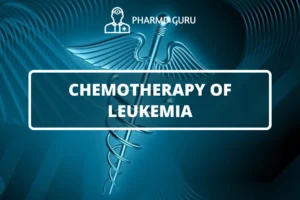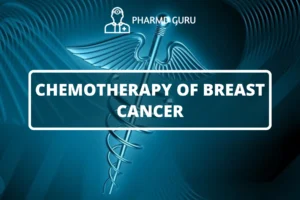Psoriasis is a chronic autoimmune skin condition characterized by the rapid buildup of skin cells, leading to the formation of thick, scaly patches on the skin’s surface. This article aims to provide an in-depth understanding of the etiopathogenesis (the cause and development of a disease) of psoriasis and explore the various pharmacotherapy options available for its treatment.
SCROLL DOWN TO THE BOTTOM OF THIS PAGE FOR ACTUAL NOTES.
Table of Contents
- Introduction
- Understanding Psoriasis
- Etiology and Risk Factors
- Pathogenesis of Psoriasis
- Types of Psoriasis
- Symptoms and Clinical Presentation
- Diagnosis of Psoriasis
- Available Pharmacotherapy Options
- Topical Treatments
- Phototherapy
- Systemic Medications
- Biologic Therapies
- Complementary and Alternative Medicine
- Lifestyle Management
Introduction
Psoriasis affects millions of people worldwide, causing significant physical and emotional distress. Understanding the etiopathogenesis of this condition is crucial for developing effective treatment strategies. Additionally, exploring the various pharmacotherapy options can provide insights into managing psoriasis and improving patients’ quality of life.
Understanding Psoriasis
Psoriasis is a chronic inflammatory skin disorder that affects the life cycle of skin cells. In individuals with psoriasis, skin cells multiply at an accelerated rate, leading to the accumulation of thick, scaly plaques on the skin’s surface. This abnormal cell growth is triggered by an overactive immune system.
Etiology and Risk Factors
The exact cause of psoriasis remains unknown, but it is believed to result from a combination of genetic, environmental, and immune system factors. Certain genetic variations have been linked to an increased susceptibility to psoriasis, while environmental triggers such as stress, infections, and certain medications can provoke or worsen flare-ups. Additionally, a dysregulated immune response plays a crucial role in the development and progression of psoriasis.
Pathogenesis of Psoriasis
Psoriasis is considered an autoimmune disorder, wherein the immune system mistakenly targets healthy skin cells. This immune response leads to the release of inflammatory molecules, such as cytokines, which promote rapid skin cell growth and inflammation. The complex interplay between immune cells, keratinocytes (skin cells), and various signaling pathways contributes to the pathogenesis of psoriasis.
Types of Psoriasis
Psoriasis presents in different forms, each with its own distinct characteristics. The most common type is plaque psoriasis, characterized by raised, red patches covered with silvery scales. Other types include guttate psoriasis, pustular psoriasis, inverse psoriasis, and erythrodermic psoriasis. Understanding the different types is essential for accurate diagnosis and treatment selection.
Symptoms and Clinical Presentation
The symptoms of psoriasis can vary widely depending on the type and severity of the condition. Common symptoms include itchy or painful skin, red patches with scales, dry and cracked skin, and in severe cases, joint stiffness and swelling. Psoriasis can significantly impact a person’s physical and mental well-being, affecting their quality of life.
Diagnosis of Psoriasis
Diagnosing psoriasis typically involves a thorough physical examination and evaluation of medical history. Dermatologists may also perform a skin biopsy to confirm the diagnosis and rule out other skin conditions. Proper diagnosis is essential for tailoring an appropriate treatment plan.
Available Pharmacotherapy Options
Various pharmacotherapy options are available for managing psoriasis. The choice of treatment depends on factors such as disease severity, location, and the patient’s overall health. The main treatment modalities include topical treatments, phototherapy, systemic medications, biologic therapies, and complementary and alternative medicine approaches.
Topical Treatments
Topical treatments are applied directly to the affected skin and are suitable for mild to moderate psoriasis. These include corticosteroids, vitamin D analogs, retinoids, salicylic acid, and moisturizers. They help reduce inflammation, control cell turnover, and alleviate symptoms.
Phototherapy
Phototherapy involves exposing the skin to ultraviolet light, either natural sunlight or artificial light sources. This treatment modality can help slow down the rapid cell growth and reduce inflammation. Narrowband ultraviolet B (NB-UVB) and psoralen plus ultraviolet A (PUVA) are the most commonly used phototherapy methods.
Systemic Medications
Systemic medications are prescribed for moderate to severe psoriasis or when topical treatments and phototherapy are ineffective. These medications work by targeting the immune system to suppress inflammation and slow down skin cell growth. Common systemic medications include methotrexate, cyclosporine, and acitretin.
Biologic Therapies
Biologic therapies are a newer class of medications that specifically target certain molecules involved in the immune response. They are highly effective for moderate to severe psoriasis and are administered via injections or intravenous infusions. Biologic agents such as tumor necrosis factor (TNF) inhibitors and interleukin inhibitors have revolutionized psoriasis treatment.
Complementary and Alternative Medicine
Complementary and alternative medicine approaches, such as acupuncture, herbal remedies, and dietary modifications, are often used in conjunction with conventional treatments. While their efficacy is not well-established, some individuals may find symptom relief with these approaches.
Lifestyle Management
In addition to pharmacotherapy, lifestyle modifications can help manage psoriasis and reduce flare-ups. These include maintaining a healthy diet, managing stress levels, avoiding triggers, quitting smoking, and practicing good skin care habits. A holistic approach that combines medical interventions with healthy lifestyle choices can yield better outcomes for individuals with psoriasis.
ACTUAL NOTES:




